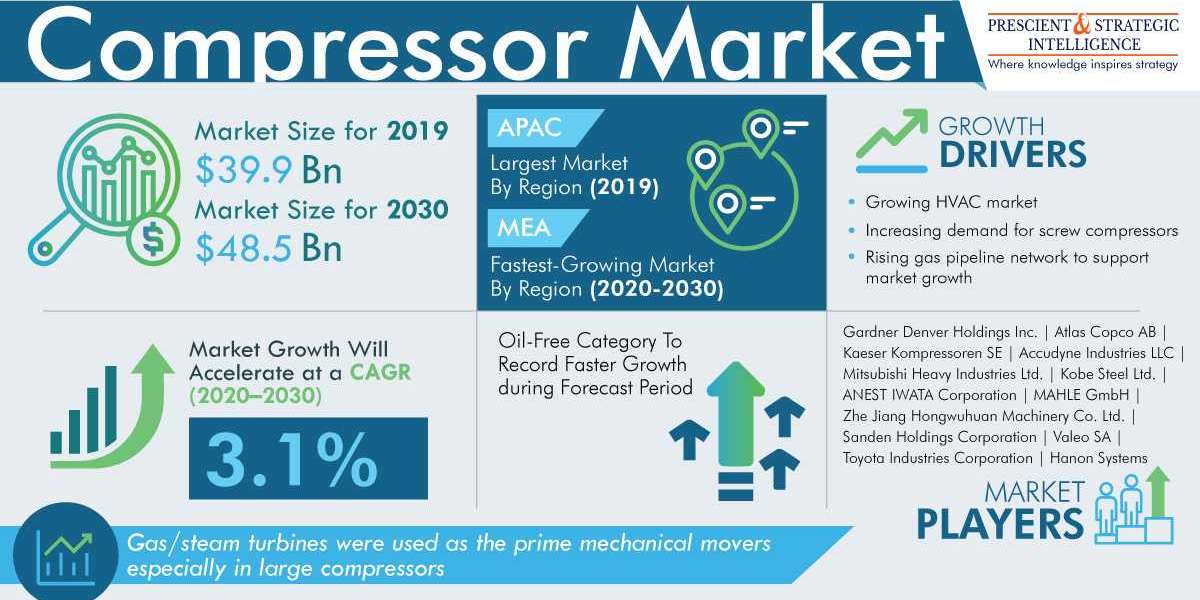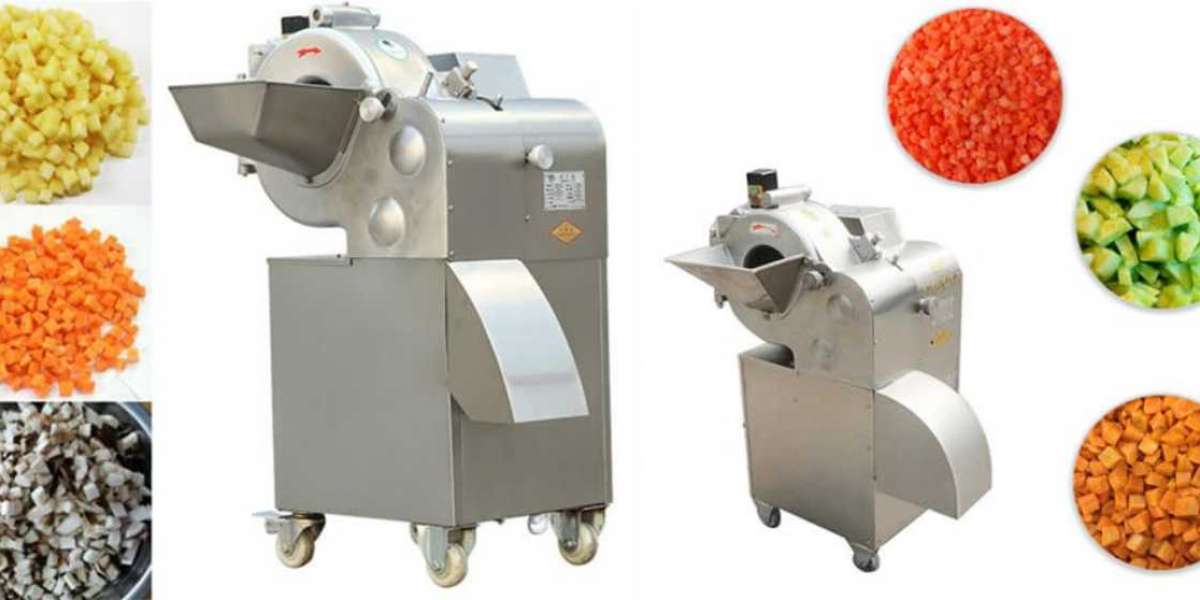Factors such as the expanding gas pipeline network, flourishing automotive industry, and increasing installation of heating, ventilation, and air conditioning (HVAC) system are expected to steer the compressor market at a CAGR of 3.1% during the forecast period (2020–2030). According to PS Intelligence, the market was valued at $39.9 billion in 2019 and it is projected to reach $48.5 billion revenue by 2030. Moreover, the market is witnessing a trend of increasing preference for variable-frequency drives (VFDs) over gas turbines, owing to improved productivity, reduced noise, and accurate speed and process control exhibited by them.
The rising installation of HVAC equipment, on account of the increasing construction of commercial and residential buildings and the mounting number of smart homes, is one of the major growth drivers for the market. Additionally, the soaring global temperature, on account of the excessive burning of fossil fuels and extensive use of chlorofluorocarbon (CFC), will also boost the demand for HVAC systems worldwide. Moreover, the rapid development of energy-efficient HVAC systems is also creating a huge demand for compressors.
Besides, the expanding automobile sector, owing to the growing disposable income of people, escalating demand for electric cars, and increasing technological innovations, is also expected to contribute to the compressor market growth. For instance, the International Energy Agency (IEA) estimated that 2.3 million electric cars were sold across the world in 2020. Furthermore, as per the IEA, the global stock of battery electric vehicle (BEV) cars will reach 79,975,992 units by 2030. Automakers use compressors for engine construction, tire inflation, car painting, and air conditioning systems.
The lubrication type segment of the compressor market is bifurcated into oil-free and oil flooded. Of these, the oil-free category is expected to witness faster growth during the forecast period, owing to the extensive requirement for uncontaminated air in the healthcare and food and beverage industries to ensure safety during the manufacturing process and of end customers. As pure air is quintessential for such industries, even the tiniest drop of oil can cause product wastage, recall, and damage or even hamper the production equipment, owing to which they are deploying oil-free compressors.
Geographically, Asia-Pacific (APAC) led the compressor market during the historical period (2014–2019), and it is expected to retain its dominance during the forecast years as well. This can be primarily ascribed to the burgeoning electric vehicle (EV) sale, owing to the increasing government support in the form of incentives and subsidies, in countries such as India, China, and Japan. For example, the Government of India rolled out the second phase of its Faster Adoption and Manufacturing of Hybrid and Electric vehicle (FAME) scheme to encourage EV adoption in the nation.
Whereas, the Middle East and African (MEA) compressor market is expected to display the fastest growth throughout the forecast period, due to the rising production of processed food items and surging investments in the establishment of manufacturing plants in the region. At present, automotive original equipment manufacturers (OEMs) are setting up their production units in Tunisia, Algeria, Morocco, and Egypt. Additionally, the increasing focus of major Gulf countries, such as Saudi Arabia, to transform their industrial landscape will also augment the market growth in MEA.
Thus, the growing automobile industry and the increasing adoption of HVAC systems will drive the compressor demand in the foreseeable future.



